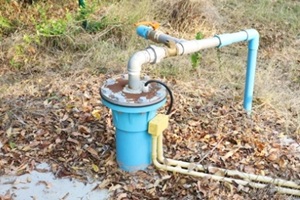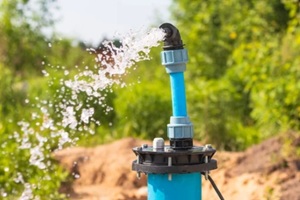
About 13% of Maryland residents rely on private wells for their water supply, making pump performance and water quality a year-round priority. The region’s climate, marked by high humidity and freeze-thaw conditions, accelerates wear on well components and increases the risk of failure. For those in need of well pump service in Carroll County, MD, and surrounding areas, knowing how seasonal changes affect your system is the first step to keeping your water safe and reliable.
This article provides useful tips on how to keep your well pump in good shape year round.
Spring Well Pump Maintenance for Post-Winter Performance
Spring in Maryland brings heavy rains and rising groundwater, which can expose weaknesses in a well system. Begin the season by inspecting the well cap and casing; the casing should extend at least 8 inches above grade, as required by state code, and should be free of cracks, rust, or loose fasteners. A secure, sanitary well cap with a gasket and screened vent is your first line of defense against surface runoff, insects, and debris.
Water testing is another spring priority to keep in mind, as spring runoff can introduce bacteria or shift nitrate levels, particularly in agricultural or suburban areas. To check for contamination, send a properly collected sample to a lab certified by MDE. Make sure the system is shut off and drained before checking the tank’s air pressure, which should be set to 2 psi under the pump’s cut-in level.
For example, with a 30/50 pressure switch, the pre-charge should be 28 psi. A waterlogged tank causes short cycling, which wears out pump motors and increases energy use. If your system has sediment filters, flush them thoroughly after major storms to prevent clogging and pressure drops.
Summer Well Pump Maintenance to Stay Cool
Summer heat and dry spells often stress well systems, especially in lower-yielding aquifers common in parts of Maryland’s Coastal Plain. Listen for prolonged or noisy pump runs; these may indicate that the water table is dropping or that a check valve is leaking. Continuous operation can overheat pump motors and lower their lifespan. Walk around your property and inspect exposed lines for seepage, as even a slow leak can drain a shallow well during drought.
Scheduling high-demand tasks like irrigation, laundry, and commercial water use during off-peak hours can help balance draw and reduce the chance of running dry. In hot weather, radon levels in groundwater can rise. If your property is in central Maryland, consider scheduling a radon-in-water test. These areas have known geologic conditions that make elevated radon more likely, especially when water levels are low and drawdown increases contact time with bedrock.
Fall Well Pump Maintenance to Prepare for Winter

As leaves begin to fall, make sure the area around your wellhead stays clean and dry. Go ahead and clear away mulch, leaf piles, and debris so that the ground slopes outward from the casing. Surface runoff during fall rains can carry contaminants toward the well if proper grading isn’t maintained. Exposed piping should be insulated before temperatures drop, so go ahead and wrap drop pipes and jet lines with foam sleeves or self-regulating heat tape.
These simple steps can prevent freezing and burst lines during Maryland’s early frosts. Before winter storms hit, schedule a visit from a licensed well contractor. A fall inspection should include a drawdown test, motor amperage reading, and wiring check. These diagnostics help identify early wear, potential faults, and power issues that could leave your system offline during harsh weather.
Winter Well Pump Maintenance to Prevent Well Water Freeze
Winter maintenance for your system focuses on protecting against freezing and maintaining power reliability. First, verify that the pitless adapter is installed below the frost line, which ranges from 30 to 36 inches deep in most parts of Maryland. The adapter should be watertight at the casing penetration to prevent freeze-related failures and groundwater intrusion.
For systems housed in pump sheds or enclosures, add insulation and a small heat source. A low-watt heater or trouble light can prevent freezing during cold snaps. If your well setup includes shallow piping, a well-insulated box with foam board and a 60-watt bulb may very well save you from an emergency service call. Letting a faucet drip during single-digit nights can keep water moving and reduce freeze risk in exposed lines.
Also, test your backup generator monthly. A well pump needs enough power to handle its locked-rotor amps, and many outages in Maryland are caused by ice storms. Make sure to store stabilized fuel and run the generator for at least 15 minutes during each test.
Keep Your Well Pump Running Year-Round

Regular seasonal upkeep keeps your equipment in good shape and helps maintain a safe and reliable water supply. Staying on top of seasonal checks, water testing, and professional inspections means fewer surprises and longer system life. At Tri-County Pump Service, we’ve spent over 30 years helping homeowners and businesses across Maryland, Virginia, and West Virginia maintain reliable, high-quality water systems.
Being family-run, we take pride in offering knowledgeable, personalized service on every job we take on. If you’re looking for dependable well pump service in Carroll County, MD, or just need a routine check, our team is ready to assist. Give us a call at 1-(301)-882-2698, use our online contact form, or schedule a service visit directly on our website. We’re here to help keep your water flowing with trusted, local service that covers your entire home water system.



